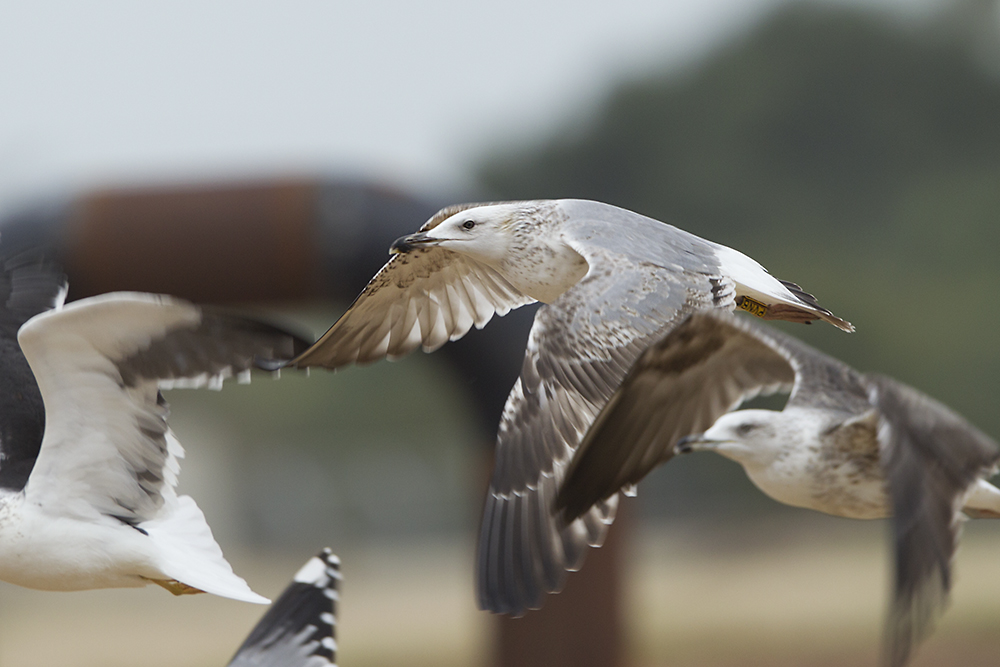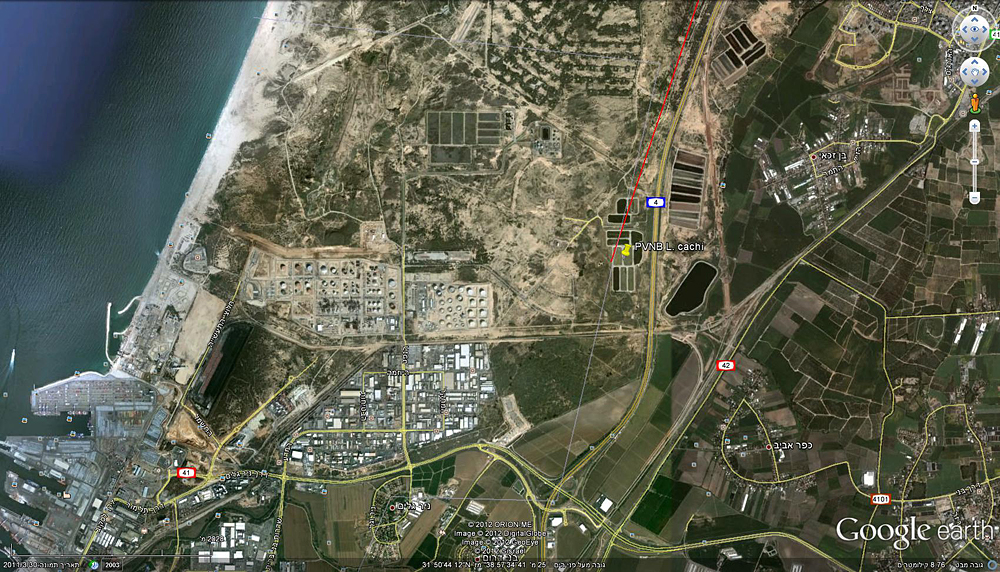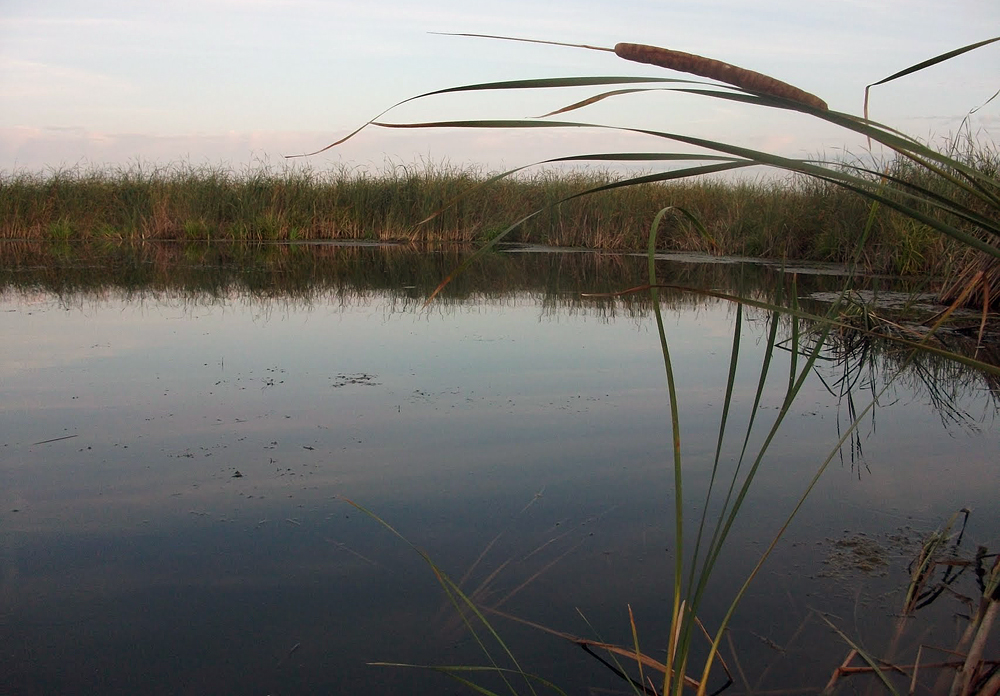 Larus cachinnans
Larus cachinnans
(last update:
Greg Neubauer
Marcin Przymencki
Albert de Jong
Mars Muusse
cachinnans plumages
Larus cachinnans? 1CY & 2CY PVNB June 2011 & December 2012, Russia & Israel. Picture: Larisa Plusnina & Amir Ben Dov.
rings: metal Moskwa C-525124 + yellow PVNB (black inscription)
species: Larus cachinnans group (cachinnans, barabensis or intergrade)
age: nestling / pullus (age > 25 days)
date: 18.06.2011
place: Selitba Lake, Penza oblast, Russia, central point of the lake: 53°10'11.04"N, 46°50'9.84"E
Ringer: Larisa Plusnina et al.
Distance travelled is 2562.4 km, direction 202.6 deg (almost perfectly south).
Recorded before: January 2012, also in Israel.
See also PVPS.
below: cachinnans? 2cy PVNB December 21 2012, Ashdod, Israel. Picture: Amir Ben Dov.
Many inner coverts and upper tertials replaced in partial autumn moult, now almost plain grey. Small mirror on P10.








below: cachinnans? 1cy PVNB June 18 2011, Selitba Lake, Penza oblast, Russia (53°10'11.04"N, 46°50'9.84"E). Picture: Larisa Plusnina.
Chick. The colony is in reeds at a shallow lake in the forest-steppe zone, and is a mixed one. That is, cachinnans and barabensis-type gulls are the two taxa which breed there, at times in mixed pairs and some intermediate types are also present. Here you can have a look at adults from there: http://gneubauer.republika.pl/Selitba1.html. Probably heuglini does not breed this far south (tundra breeding species), though few birds were nearly as dark as heuglini (clearly darker than baraba's from SW Siberia). When the chicka are ringed, several alrming adults fly overhead, but it is impossible to tell which is the parents, and therefore which taxon the pullus belongs to. Observations from ringed birds, once they are adult, should confirm taxon.

Shallow lake near Kuznetsk, Penza Oblast, between Moskwa and River Volga.
